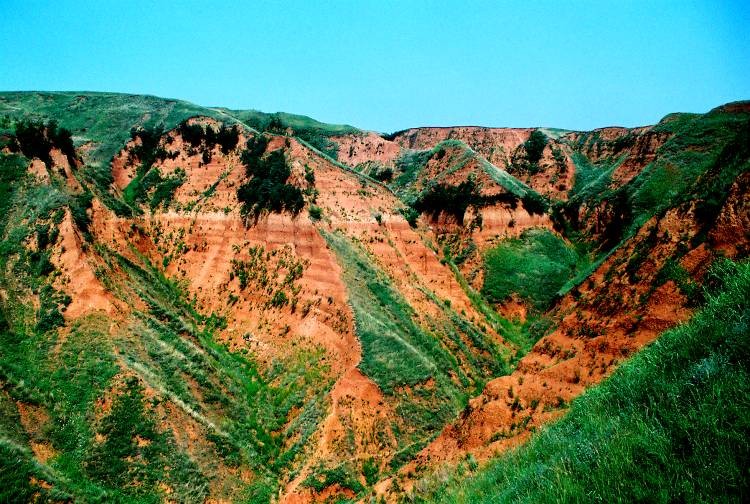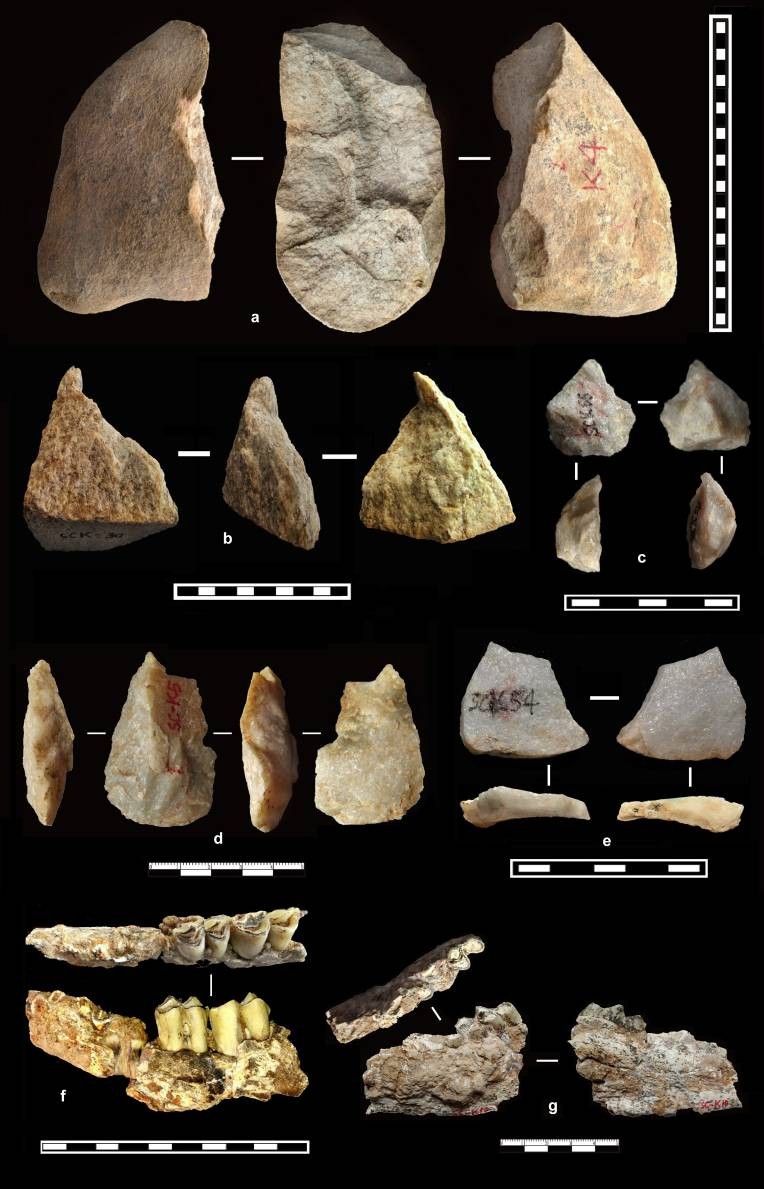The earliest evidence for our ancestors outside Africa has been found by a Chinese team led by Professor Zhaoyu Zhu of the Guangzhou Institute of Geochemistry/State Key Laboratory of Loess and Quaternary Geology, Chinese Academy of Sciences. His team, which included Professor Weiwen Huang (Chinese archaeologist, IVPP of CAS) and Professor Robin Dennell, a British archaeologist as well as fellow of British Academy, found stone tools 2.12 million years old at Shangchen, a Palaeolithic locality newly found by this team, in Lantian county in the southern part of the Chinese Loess Plateau. The loess-palaeosol stratigraphy and the palaeomagnetic stratigraphy have been established by using thousands of data from a range of methods including the key layers comparison, sedimentology, mineralogy, geochemistry, paleomagnetism and rock magnetic methods. The stone artefacts (including cores, flakes, scrapers, points, borers, hammerstones, picks and bifaces) of Shangchen locality, which suggest evidence of early tools were found in a successive loess-palaeosol section, and 17 stone artefact horizons of early Pleistocene strata (1.26~2.12 Ma) are used to establish the chronological framework of the loess-palaeosol-palaeolithic culture sequence during the early Pleistocene. The layer containing these stone tools was dated by linking the magnetic properties of the layer to known and dated changes in the earth’s magnetic field.
These oldest artefacts (2.12 Ma), which were found within L28 layer between the Olduvai Subchron and the Réunion Excursion of palaeomagnetic stratigraphy, are c. 270,000 years older than the 1.85 million year old skeletal remains and stone tools from Dmanisi, Georgia, which were previously the earliest evidence of humanity outside Africa. Because no skeletal remains were found with the stone tools from Shangchen, we do not know who made them, but it is likely to be an early form of our own genus Homo.
Moreover, the length of our artefact sequence – of 17 stone cultural horizons (probably with a high average occupation of ~ 50 ka) found in the same locality – is very rare world-wide, and indicates a repeated – but not necessarily continuous – hominin occupation of the Chinese Loess Plateau for almost a million years between 1.26 and 2.12 Ma, and most occupations were in the palaeosol layers (11 layers of total 17 layers) which indicate a kind of warm-wet climate.
This breakthrough expands a new direction of research on the internationally leading Chinese loess-palaeosol sequence, and prompts reconsideration on the pattern of early human’s origin, migration and dispersal.
The corresponding contribution has been published online in Nature on July 11th.
Relative link:https://www.nature.com/articles/s41586-018-0299-4

Landscap of Loess-palaeosol sequence at the Shangchen Palaeolithic locality, Lantian County, Shaanxi Province, North China (Picture by Professor ZHU Zhaoyu)

Some stone artefacts and fossils from the oldest artefact cultural horizons (S27-L28, ~2.00~2.12 Ma BP) at the Shangchen Palaeolithic locality (Picture by Professor ZHU Zhaoyu)

